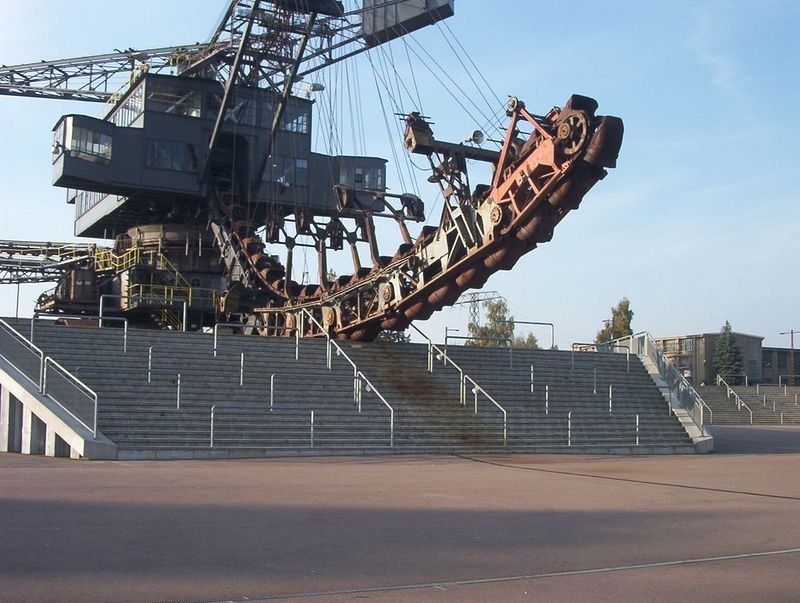Near the city of Gräfenhainichen, in Germany, in a former open-cast mine, lie five enormous decommissioned industrial machines. There are bucket wheel excavators, continuous bucket dredgers as well as stackers, each measuring up to 130 meters long and 30 meters high. These big machines once helped excavate millions of tons of brown coal in the open mine of Golpa-Nord. When the coal ran out in the 1990s, Golpa-Nord was shut down and these machines were left behind to form an open air museum called Ferropolis: The city of iron. The unusual backdrop formed by these gigantic relics of industrial history, surrounded by the flooded mine shaft, is nowadays a popular setting for open-air concerts, opera and music festivals.
A scene from Melt! Festival in Ferropolis. Photo credit
After the Second Word War and the subsequent division of Germany, the communist government began plundering the country’s natural resources to expand its industrial capacity. The government’s dependence on brown coal to power its cities and factories led to intense mining operation and all scattered individual mining areas were merged into a single entity. At its peak, the German mining industry employed 60,000 workers and produced 100 million tons of coal per year, which was used to supply innumerable power stations, coal-briquette factories and low temperature carbonization plants.
Golpa-Nord was one of the smaller mines, but only by comparison. The scale of operation was huge. The mine covered 1,915 hectares in area and 342 million cubic meters of earth were removed to produce 70 million tonnes of brown coal. The operation was, however, vastly inefficient, and when Germany was reunified in 1989, many outdated plants and mines were shut down. Golpa-Nord stopped production in 1991.
For a few years, the hulking machinery of the mine sat on the ground waiting to be hauled away to the scrapping yard. But instead, the five machines were gathered in a plateau to become Ferropolis, a memorial to 150 years of brown coal extraction. A museum in a former power station educates visitors about the history and development of lignite mining technology, while the surrounding ground with sculptures and artistically designed landmarks provide an impressive backdrop for performances and events. The rest of the mine was flooded to create a lake.
A retired TAKRAF 1521 mining excavator, in Ferropolis. Photo credit


An old mosquito in Ferropolis. Photo credit

Aerial view of Ferropolis. Photo credit
Sources: www.ferropolis.de / Ilako / National Geographic / “New Landscape Design” By Robert Holden























Comments
Post a Comment